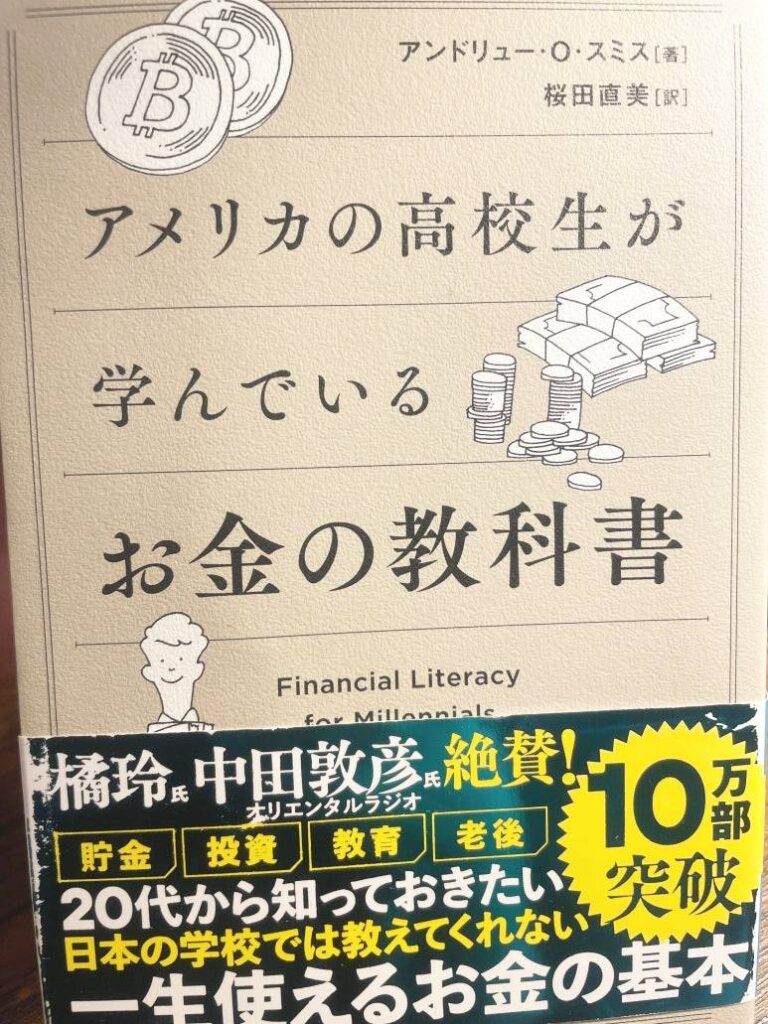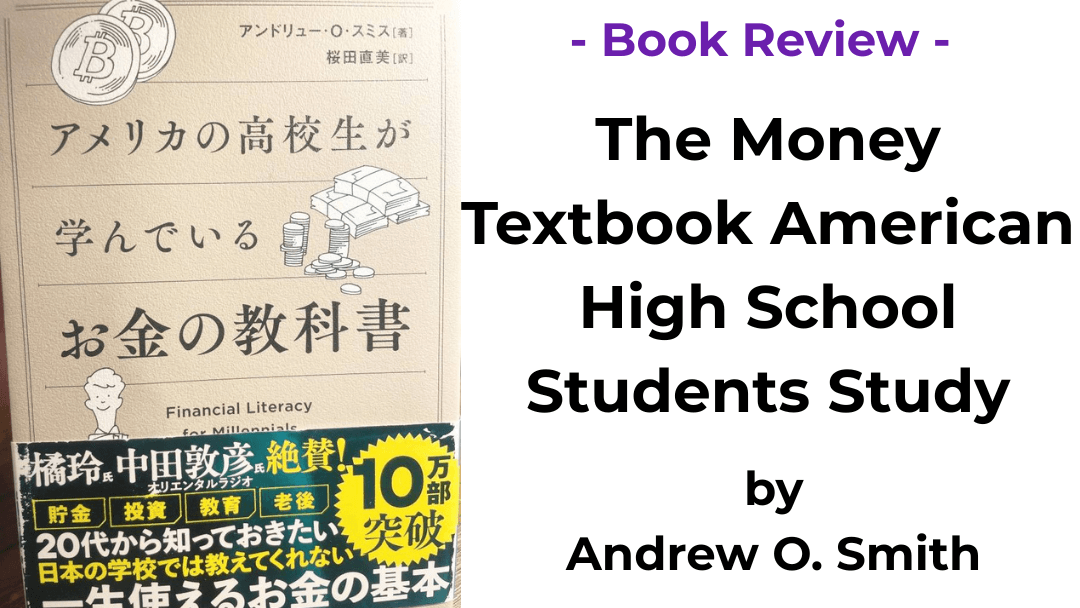
✨Stars — Indicate the difficulty level of the book content.
★☆☆ 1 Star: Easy to read and understand.
★★☆ 2 Stars: Moderate difficulty with some specialized terms.
★★★ 3 Stars: Advanced content with complex ideas and terminology.
About the Book
■Title: The Money Textbook American High School Students Study (アメリカの高校生が学んでいるお金の教科書)
■Author: Andrew O. Smith (アンドリュー・O・スミス)
■Publisher: SB Creative (SBクリエイティブ)
In the United States, often called a leader in financial education, high school students learn about money and finance as part of their regular school curriculum. Understanding concepts such as saving, budgeting, credit, and investing from an early age helps them build a strong foundation for their future lives.
This book, アメリカの高校生が学んでいるお金の教科書 (“The Money Textbook American High School Students Study”), is based on such financial education practices in the U.S. Its original title is Financial Literacy for Millennials: A Practical Guide to Managing Your Financial Life for Teens, College Students, and Young Adults, written as a practical guide for young people entering financial independence.
Summary
This book is not just about handling money — it is a comprehensive guide to the fundamental principles of finance that everyone must know throughout life.
It explains how to plan your finances, design your career, manage savings and banking, and keep control of your budget and spending in everyday life.
It also teaches readers about credit cards, debt, and bankruptcy risks, while introducing safe ways to invest and how to protect oneself from financial fraud.
Beyond that, it covers insurance, taxes, social welfare systems, laws and contracts, and even how to prepare for retirement — all the key financial topics that people inevitably face in their lives.
What makes this book truly valuable is that these essential lessons are written so clearly and simply that even high school students can fully understand them.
For young readers who are new to finance, as well as for adults who have never studied money seriously, this serves as a practical and lifelong reference for financial literacy.
Notable Quotes
■5 out of 10 Money Tips You Must Remember
1. Keep it simple: Money management works best when it’s simple.
2. Live frugally: Money is not unlimited.
7. Remember taxes apply to everything: Always think in after-tax terms.
8. Think long-term: Prepare for the 100-year life era.
9. Know yourself: There’s no one-size-fits-all method.
My Thoughts
After becoming an adult and earning my own money, I came to truly realize the importance of money and financial management. As a Korean living in Japan, I was not very familiar with the Japanese financial system, so I decided to study on my own and obtained the FP (Financial Planner) Level 2 certification. FP is a Japanese financial qualification that covers essential knowledge for life such as social insurance, taxes, inheritance, real estate, and pensions. I recommend that anyone interested start with Level 3, as it already provides a solid foundation.
When I came across The Money Textbook American High School Students Study, the title alone was enough to spark my interest. The content itself was also written in a way that even high school students, young professionals, or adults with little financial knowledge can easily understand.
Most of the ideas resonated with me, but I also felt some limitations. Since the book is based on the American financial system, not everything applies directly to the Japanese context. For example, the author stresses the importance of saving to benefit from compound interest. However, in Japan, although negative interest rates were only recently lifted, deposit interest rates remain close to 0%. This makes it nearly impossible to enjoy the benefits of compounding, and in fact, with inflation, simply keeping money in savings may cause its real value to decline.
That said, apart from such differences in financial systems across countries, the book provides a simple yet thorough explanation of the basic nature of money and the essential knowledge everyone should have. It is a highly recommended introduction for those who want to understand American finance or learn the fundamentals of personal finance in a single volume.




Comments